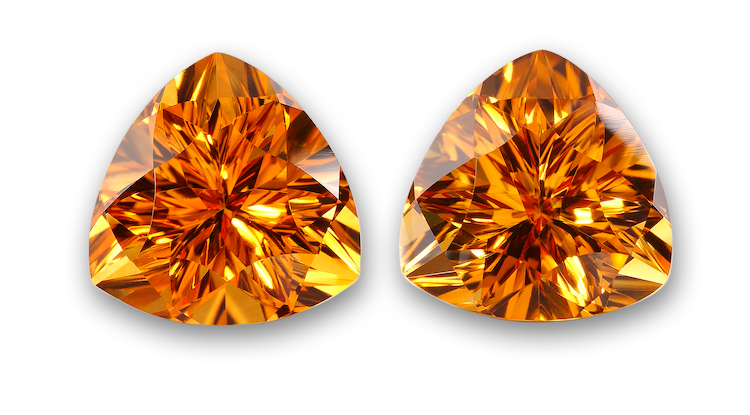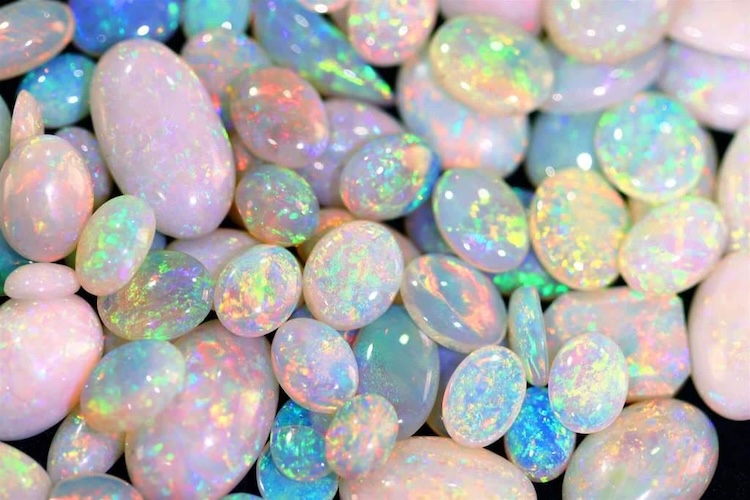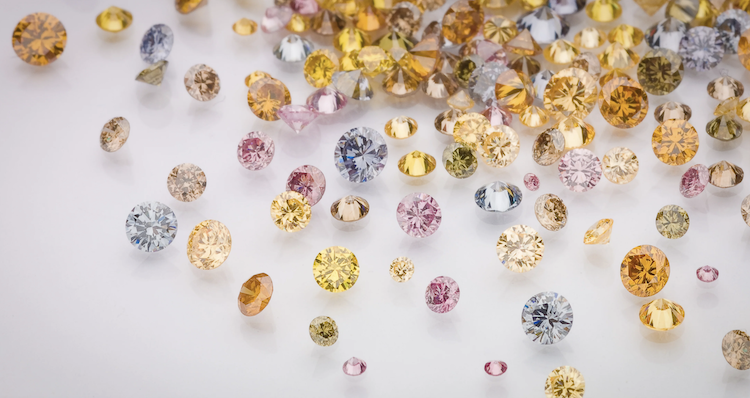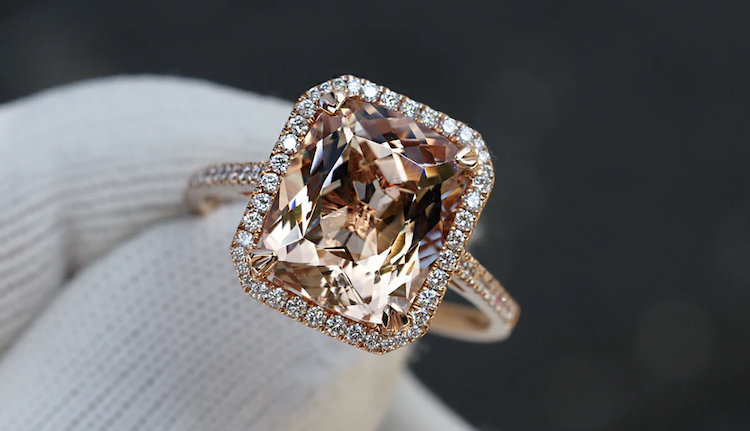Hematite Value, and Price by Form and Variety
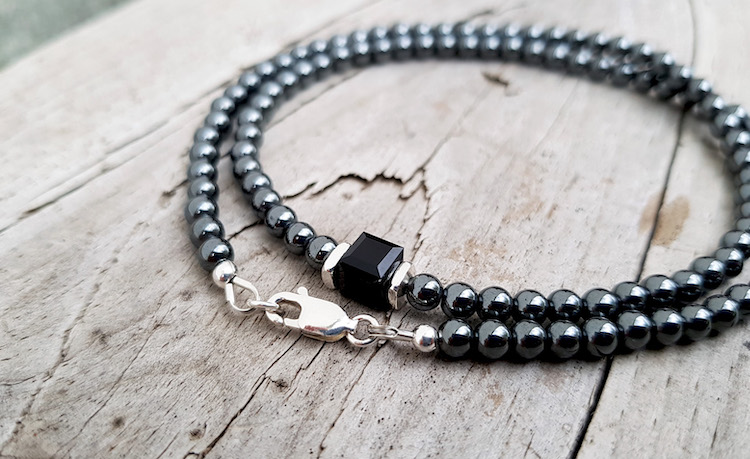
Hematite has long been used as a pigment. As a gemstone, it’s carved into beautiful jewelry. Today we will explore the value of hematite by variety and form.
Hematite, a mineral known for its striking metallic luster and diverse range of forms, has captivated humanity for centuries.
Hematite is not as common as diamonds, or sapphires, but it’s a popular gemstone among collectors. The highly pigmented stone has been used for thousands of years in jewelry, medicine, and as a pigment.
So, let’s take a deeper look into the value of hematite and what makes this gemstone unique.
What is Hematite
Hematite is a mineral composed of iron oxide. Its name comes from the Greek word, ‘haima’ which means blood, due to its highly pigmented brown color.
From its historical uses as a pigment in cave paintings to its modern-day applications in industry and jewelry, hematite holds a unique place in the world of minerals. It is found in various geological settings, hematite can be discovered in sedimentary rocks, igneous rocks, and even as a weathering product in soils.
This gemstone comes in various shades, depending on its form. One popular hematite, “Big Daddy” was acquired by the University of Michigan Mineral Museum in the late 1970s for a price of $100,000. It weighed over 10,000 pounds and is one of the most valuable and expensive hematite ever sold.
Also read:
Value of Hematite by Form
Let’s take a look at different forms of hematite and their value.
1. Metallic Hematite

Metallic hematite has a shiny metallic luster, and it is created by the deposition of thin layers of hematite over the years, creating a reflective surface.
Due to its metallic luster, this gemstone is a popular choice in jewelry and decorations. It is cut, and polished into beads to be used in necklaces, bracelets, and more.
How much is metallic hematite worth: Because of its alluring and shiny appearance, metallic hematite is worth $0.08 to $3.00 per carat.
2. Botryoidal Hematite
Botryoidal hematite, named for its grape-like cluster formation, is a mesmerizing variety that showcases a rounded, globular surface. This form is often sought after for its aesthetic appeal, making it a favorite among collectors and jewelry enthusiasts.
The spherical shapes can range from small, resembling clusters of grapes, to larger, more substantial formations that serve as statement pieces in jewelry.
How much is botryoidal hematite worth: The price of botryoidal hematite depends on various factors like size, shape, etc. but on average it is worth $1.50 to $3.00 per carat.
3. Kidney Ore Hematite
Kidney ore hematite derives its name from its kidney-shaped formations, often resembling smooth, rounded masses. This form is characterized by its dark metallic color and is commonly used in the production of iron and steel.
The smooth, polished appearance of kidney ore hematite makes it a favored choice for decorative items and jewelry. Large stones are more valuable as compared to smaller ones.
How much is kidney ore hematite worth: Because of its alluring and shiny appearance, kidney ore hematite is worth $0.04 to $2.00 per carat.
4. Earthy Hematite
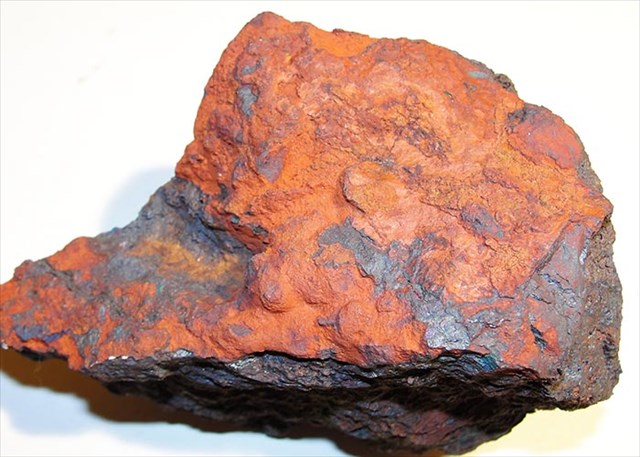
Earthy hematite has a more muted, and earthy appearance. Due to its appearance, it is also called hematite clay, or red hematite. When mixed with other minerals, it creates a range of colors from red to brown.
It is mostly used in ceramics, and pottery as a glaze. It is also used in decorations such as paperweights. In ancient times, earthy hematite was often used as a red pigment.
How much is earthy hematite worth: Earthy hematite, or raw hematite is worth $0.02 to $0.09 per carat.
5. Martite
Martite is a pseudomorph of hematite, meaning it has a different mineral composition but retains the external crystal form of hematite. It often occurs as a replacement for magnetite or other iron minerals.
Martite can be found in a variety of shapes, from tabular to acicular (needle-like) crystals. Due to its unique formation process, martite is valued among mineral collectors and geologists for its geological significance.
How much is martite worth: Martite costs somewhere between $0.05 to $0.80.
6. Iron Rose
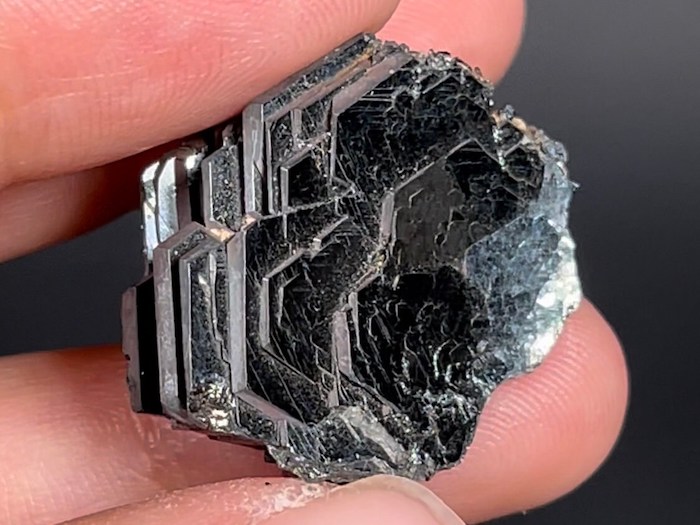
Iron rose, also called Hematite rosettes, has a unique form resembling a rose. It is mostly formed when Hematite precipitates out of water and accumulates in the nucleus.
It is typically black or gray in color, with a metallic luster. It can be found in small, or really big sizes that are mostly used for decorative purposes. Because of its unique shape, the iron rose is associated with the heart chakra and is used to promote feelings of love and compassion.
How much is an iron rose worth: The price of an iron rose depends on the quality of the rock and its size. It is typically valued between $0.5 to $1.2 per carat.
7. Specularite
Specular hematite, also known as specularite, is distinguished by its highly reflective, mirror-like surface. This form is prized for its metallic sheen and is commonly used in the production of pigments for paints.
The specular reflection of light from its surface gives it a captivating appearance, making it a popular choice for ornamental purposes and in the creation of metallic paints.
How much is specularite worth: The price of specularite depends on the quality of the rock and its size. It is typically valued between $2.00 to $10 per carat.
Factors Determining the Value of Hematite
Here are some of the common factors that determine the value of hematite:
1. Size
Larger specimens of hematite, whether in botryoidal or kidney ore form, often command higher prices.
Size is a significant factor, especially in the context of ornamental and decorative use, where larger pieces are more visually impactful.
2. Color
The color of hematite can range from metallic silver to black, with variations in shades of red and brown. The intensity and saturation of these colors significantly impact the value of the mineral.
Deep, rich colors are generally more prized, especially in the context of ornamental and jewelry applications.
3. Purity and Impurities
The purity of hematite, without significant impurities or inclusions, contributes to its value. Specimens with minimal impurities, especially those with a clean, reflective surface, are often considered more valuable.
However, certain impurities can also enhance the visual appeal of hematite, adding uniqueness to the specimen.
4. Structure
In the case of varieties like martite, the crystal form and structure are vital determinants of value. Well-defined crystals with intricate formations are highly sought after by mineral collectors and researchers interested in the geological aspects of hematite.
5. Rarity
Certain varieties of hematite, especially those with unique geological formations or occurrences, can be rare and valuable. Specimens from specific geological locations or with distinctive features may fetch higher prices among collectors and researchers.
6. Market Demand
Like any commodity, the demand for hematite in various industries influences its price. The mineral’s applications in manufacturing, construction, and jewelry contribute to its market demand.
Economic factors, technological advancements, and trends in the jewelry and fashion industries can impact the overall demand and subsequently affect prices.
How to Get Appraisal on Your Hematite
The value of hematite depends on various factors so it is very important to enlist the help of a professional appraiser. Search for an appraisal that specializes in gemstones, and has experience with hematite.
Before going for appraisal, make sure you have all the information about your specimen that can help the appraiser make correct estimates. You should know information such as size, weight, origin, type, rarity, and more features of your specimen.
Conclusion
Hematite, with its captivating forms and versatile applications, continues to be a valued mineral in various industries and among collectors. Understanding the diverse forms of hematite and the factors influencing its price allows collectors, enthusiasts, and industry professionals to make informed decisions.

